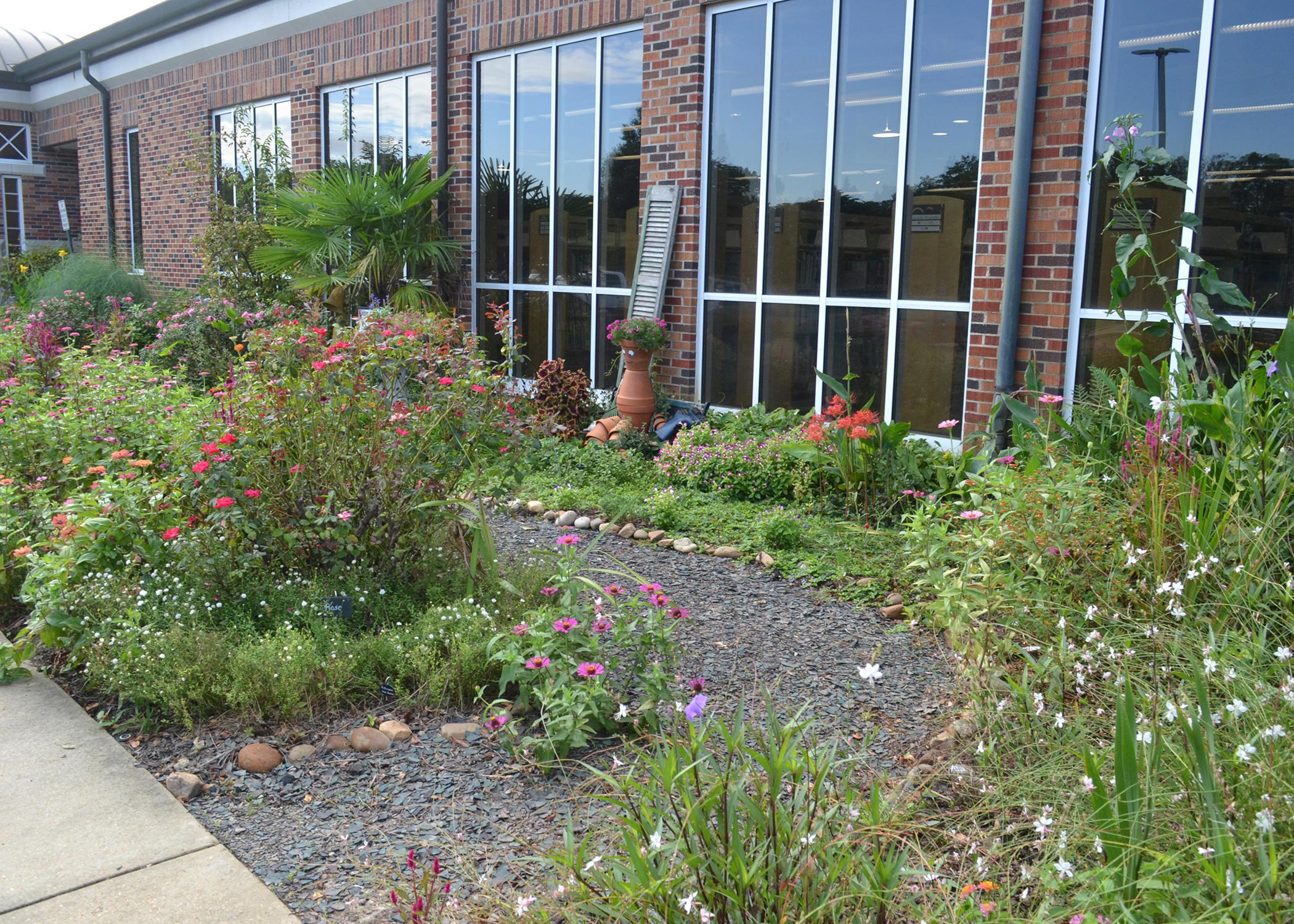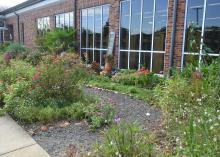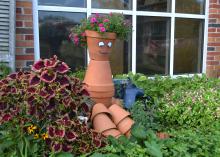Pearl children’s garden is outdoor treat for all
Children’s learning gardens are a wonderful way to educate young people about plants. They are designed as places for young children to use their imaginations to relate to their surroundings, explore, touch and play as they develop an affection for the natural world.
A few weeks ago, I had the pleasure of visiting the Pearl Public Library Children’s Learning Garden in Pearl, Mississippi. This charming space is a collaboration between the Rankin County Master Gardeners and The Spring Lake Garden Club.
It is truly a hidden gem. As I walked along the garden’s single pathway, I was surrounded by a colorful variety of plants, each contributing to the garden’s lively atmosphere.
One of the first things that caught my eye was a whimsical garden person made out of plant pots. Its “hair” made of beautiful, dark pink Portulaca blooms that stood out brilliantly against lush green foliage. The sight of those flowers made me smile; their colors were a cheerful contrast to the earthy tones of the garden.
Portulaca is commonly known as moss rose, and it is a resilient flowering plant that thrives in hot, sunny conditions. Its low-growing, succulent foliage forms a carpet of vivid color, making it an eye-catching plant in the garden.
Moss rose flowers open wide to greet the morning sun and typically close up in the evening or during cloudy weather. They reopen when the sun returns. The plant’s fleshy, needle-like leaves help it retain moisture, making it particularly well-suited for dry, sandy soils and areas that experience periods of drought.
Next to this playful figure was a stunning coleus, grown from pass-along seeds. Its deep burgundy leaves edged with delicate white ruffles created a striking display that drew my attention. The plant’s unique coloration made it stand out among the surrounding greenery, almost like a piece of living art.
This versatile plant thrives in both sun and shade, although the intensity of its colors often varies with the amount of sunlight it receives. In shadier spots, coleus tend to develop deeper, more saturated hues, while in sunnier locations, its colors can become more vivid and pronounced.
As I continued down the path, I noticed clusters of colorful zinnias scattered throughout the space. These vibrant flowers were abuzz with pollinators, their bright hues inviting bees and butterflies to feast on their nectar.
The bold, cheerful petals of the zinnias added beauty to the garden and played a crucial role in supporting the vegetables and fruits growing nearby.
A little further along, I spotted a Japanese eggplant producing long, slender fruit. It was fascinating to see how this plant, so often associated with summer, continues to thrive and bear fruit even in the fall.
At the end of the pathway, I saw a muscadine vine sprawled with clusters of bronze-colored grapes. The sight of those plump, ripe fruits glistening in the sunlight was a fitting end to my stroll through this delightful garden.
I love this children’s learning garden because it introduces both youth and adults to the beauty of ornamental plants and the bounty of vegetable gardens. Learning and nature come together in the most delightful way, offering a hands-on experience that connects people of all ages to the wonders of gardening.







